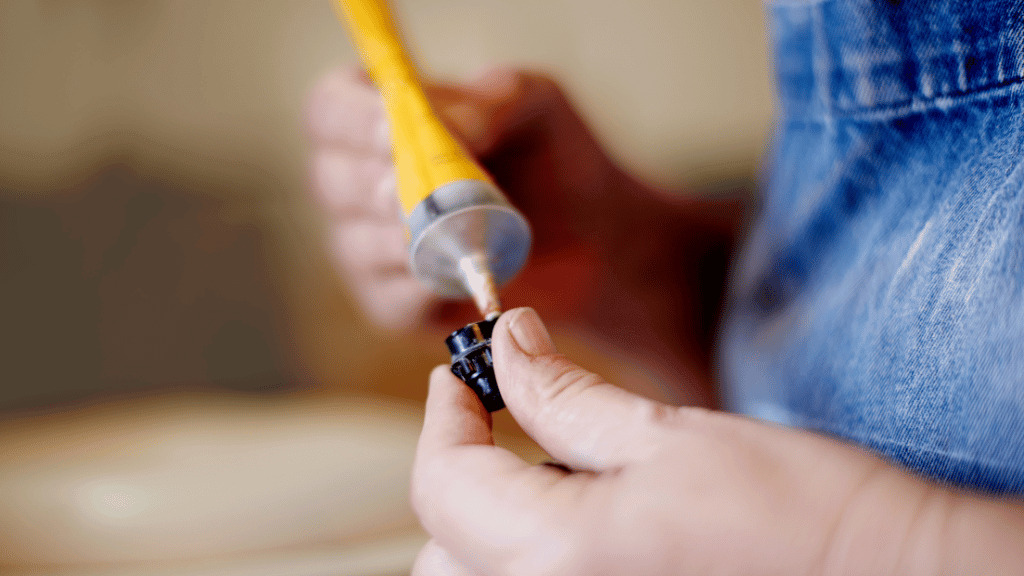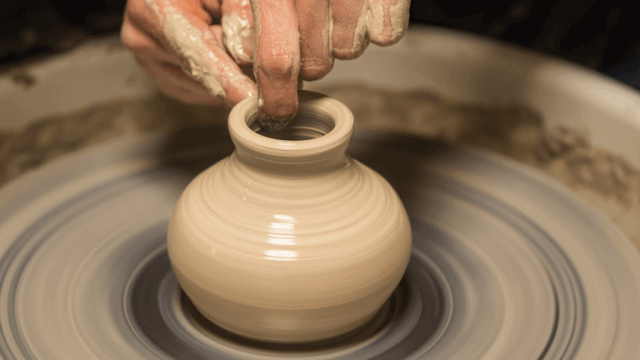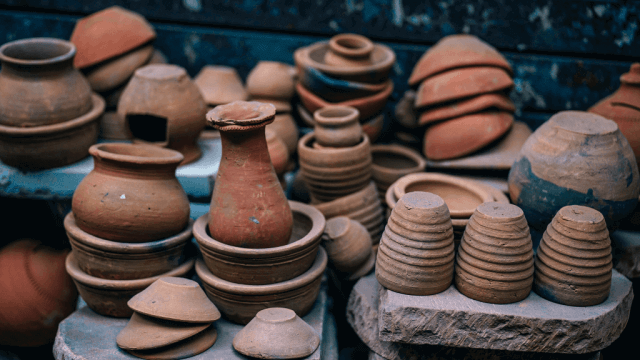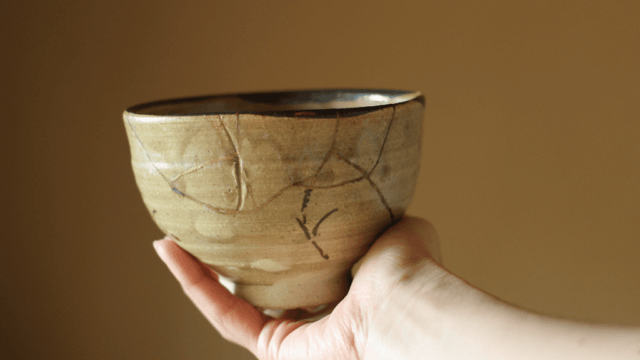To glue pottery back together, clean the broken edges with rubbing alcohol.
Then, apply epoxy or ceramic glue to one side and align the pieces, holding them together with masking tape or rubber bands until the adhesive sets.
Allow it to cure for the required time before removing the supports, then finish by gently sanding any excess glue and sealing the repair with a clear sealant.
Getting Ready to Glue Pottery
Gather the required materials: epoxy or ceramic glue, rubbing alcohol, cotton swabs, toothpicks, masking tape, rubber bands, fine-grit sandpaper, and clear sealant.
Step 1: Cleaning the Broken Edges with Rubbing Alcohol
Use a cotton swab dipped in rubbing alcohol to clean the broken edges, removing dust and oils gently.
This prepares the surface for proper adhesion.
Step 2: Applying the Adhesive.
Epoxy or Ceramic Glue
Choose a glue suitable for pottery, such as epoxy or ceramic-specific glue.
Read the instructions and properties of the adhesive you selected.
Apply a thin layer of glue to one side of the broken piece using a toothpick.
Avoid excess glue, as it may create a visible bond.
Step 3: Aligning and Joining the Pieces
Carefully align the glued side with its matching piece and gently press them together.
Hold for a few seconds to ensure proper contact.
Step 4: Securing the Pieces.
Use Masking Tape or Rubber Bands
Secure the repair with masking tape or rubber bands.
Apply pressure evenly around the glued area to keep the pieces together as the adhesive sets.
Step 5: Curing the Adhesive.
Allow Adequate Curing Time
Refer to the adhesive’s instructions for the required curing time.
Allow the glue to fully set before removing the supports.
Step 6: Finishing the Repair.
Sand and Seal the Repair
Gently sand any excess glue with fine-grit sandpaper.
Apply a clear sealant over the repaired area to improve durability and protect the repaired bond.
Tips for a Strong and Invisible Repair
For a strong and barely visible repair, keep these tips in mind:
- Use a high-quality adhesive specifically designed for ceramics or pottery.
- Apply a thin and even layer of glue, avoiding excess that may create a visible bond.
- Align the broken pieces accurately to minimize the appearance of the repair.
Choosing an Appropriate Adhesive
When selecting an adhesive, consider the following factors:
- Strength and durability – Ensure it forms a strong bond with pottery materials.
- Drying time – Check the curing time to plan your repair accordingly.
- Color – A clear or transparent adhesive will result in a less visible repair.
- Water resistance – Opt for a water-resistant glue if the pottery is subject to moisture or frequent washing.
Repairing Fragile or Complex Breaks
For delicate or intricately broken pottery, follow these additional steps:
- Repair one break at a time, allowing the glue to cure before proceeding to the next piece.
- Use clamps or a custom support system to secure complex pieces during the curing process.
- For tiny or complex breaks, consider using a syringe to apply glue more accurately.
Restoring Pottery Functionality
Keep in mind that repaired pottery may no longer be food-safe, water-tight, or capable of withstanding extreme temperatures.
Consider the intended use of the pottery and act accordingly:
- Food-safe – If you plan to use the pottery for serving food or beverages, verify that the adhesive used is non-toxic and food-safe once cured.
- Water-tight – Test the repaired pottery’s water resistance by filling it with water and checking for leaks.
- Temperature resistance – For pottery exposed to extreme heat or cold, confirm that the adhesive can withstand these conditions without losing its bond.
FAQs about Gluing Pottery Back Together
In this section, we have compiled frequently asked questions and their precise answers to help you better understand the process of gluing pottery back together.
What kind of glue should I use for pottery?
Epoxy or ceramic-specific glue is recommended for pottery repairs.
These adhesives provide a strong bond and are suitable for the material.
Can I use super glue for pottery repair?
Super glue can be used for minor repairs, but it is not designed for pottery and can be brittle when cured.
Epoxy or ceramic glue is generally a better choice for a stronger and longer-lasting bond.
How long do I have to wait for the glue to cure before using the repaired pottery?
Refer to the adhesive’s instructions for the required curing time.
Cure time may vary depending on the brand and type of glue used.
In general, it’s better to wait for at least 24 hours before using the repaired pottery.
Is the repaired pottery food-safe?
If you used a non-toxic, food-safe adhesive and followed the curing process correctly, the repaired pottery should be safe for food use.
Always check the adhesive’s specifications and ensure it is food-safe before using the pottery with consumables.
How do I remove excess glue after the repair?
Gently sand any excess glue using fine-grit sandpaper.
Be cautious not to damage the pottery or weaken the bond when removing excess glue.











